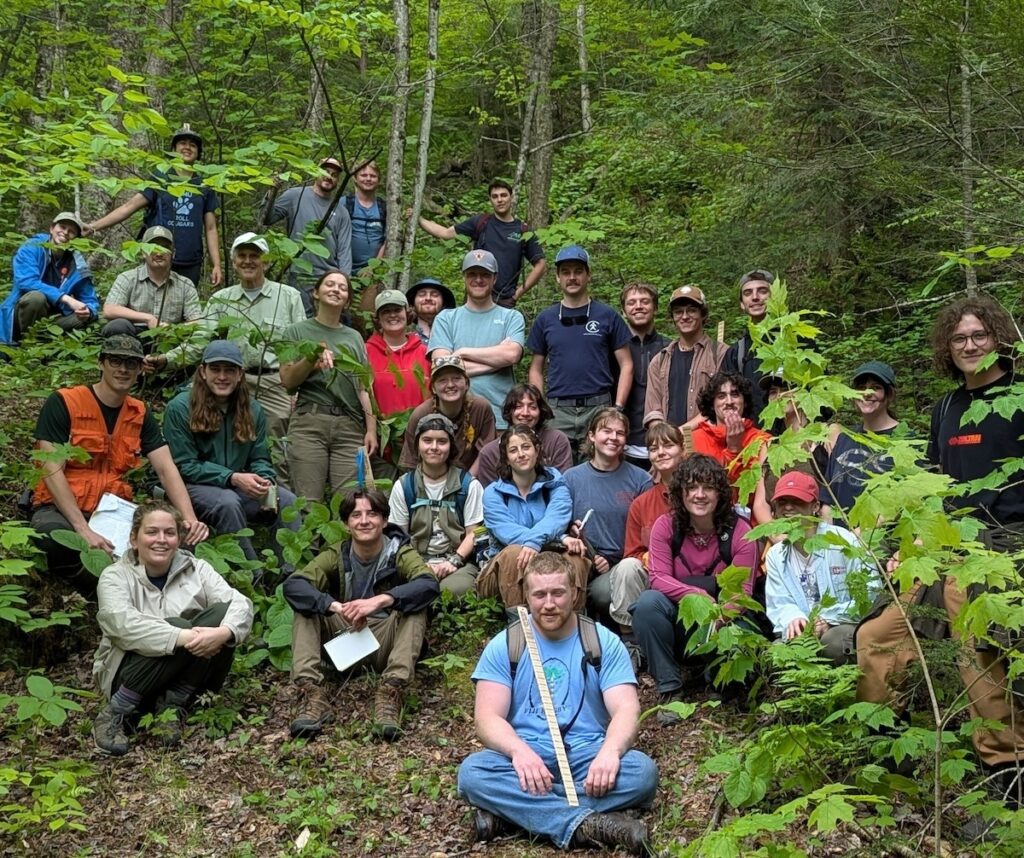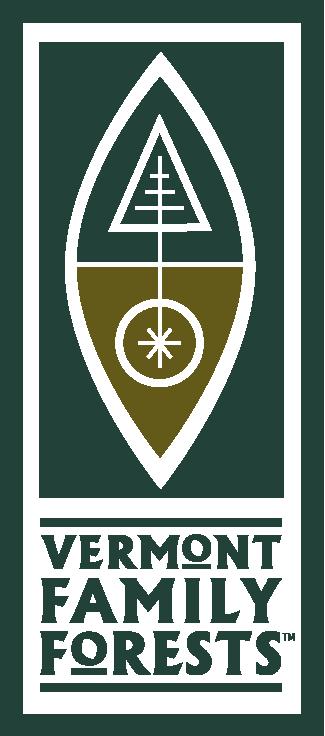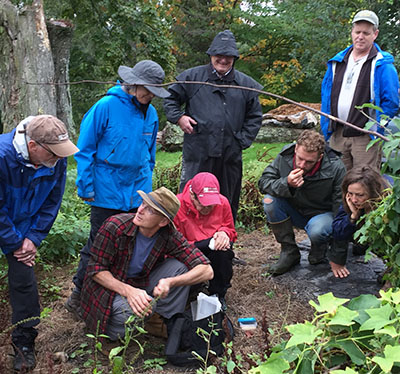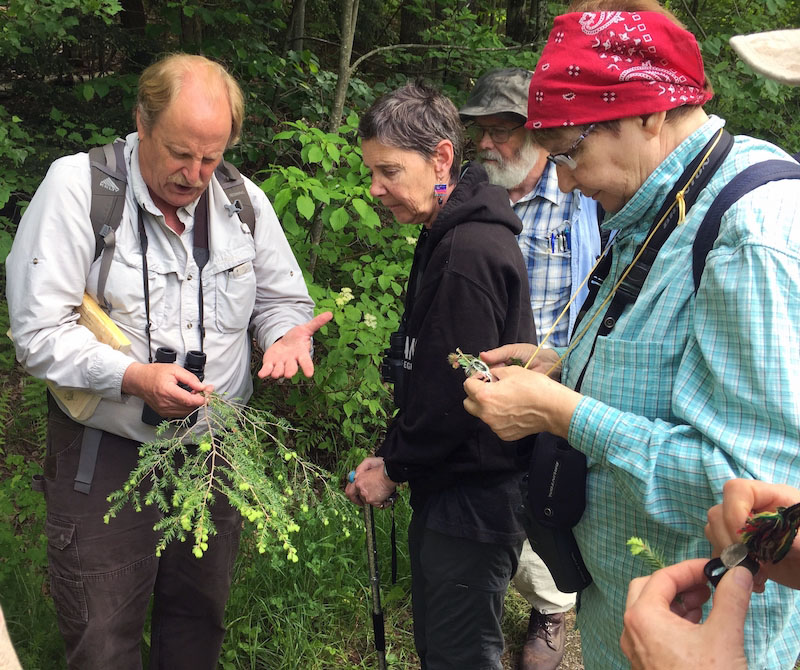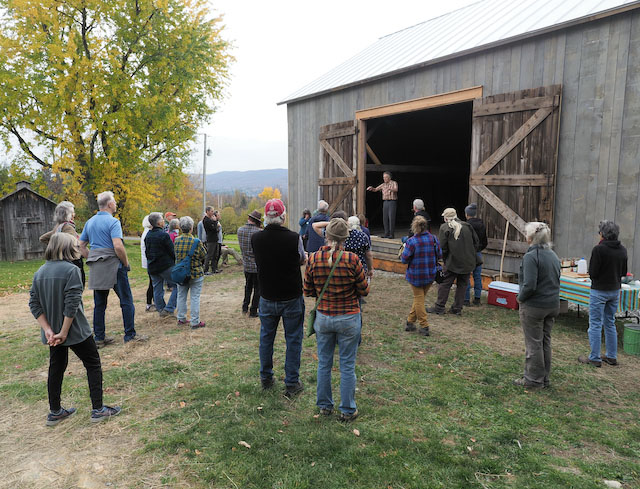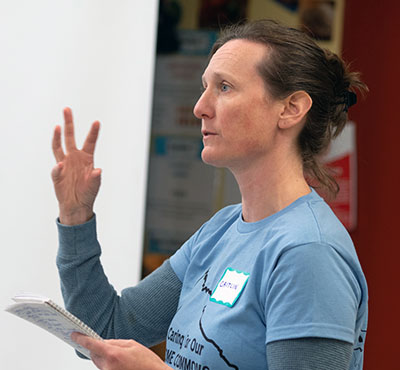
The Eastern ratsnake’s gleaming body curved along the beech branch overhead, to the amazement and delight of the 35 University of Vermont (UVM) students gathered below. The unexpected encounter with this state-listed threatened species at the Lands of the Watershed Center perfectly illustrated VFF Executive Director David Brynn’s core message to them—that careful forest ecosystem conservation is essential to conserving native wildlife species richness, water quality, carbon sequestration and storage, and flood resiliency.
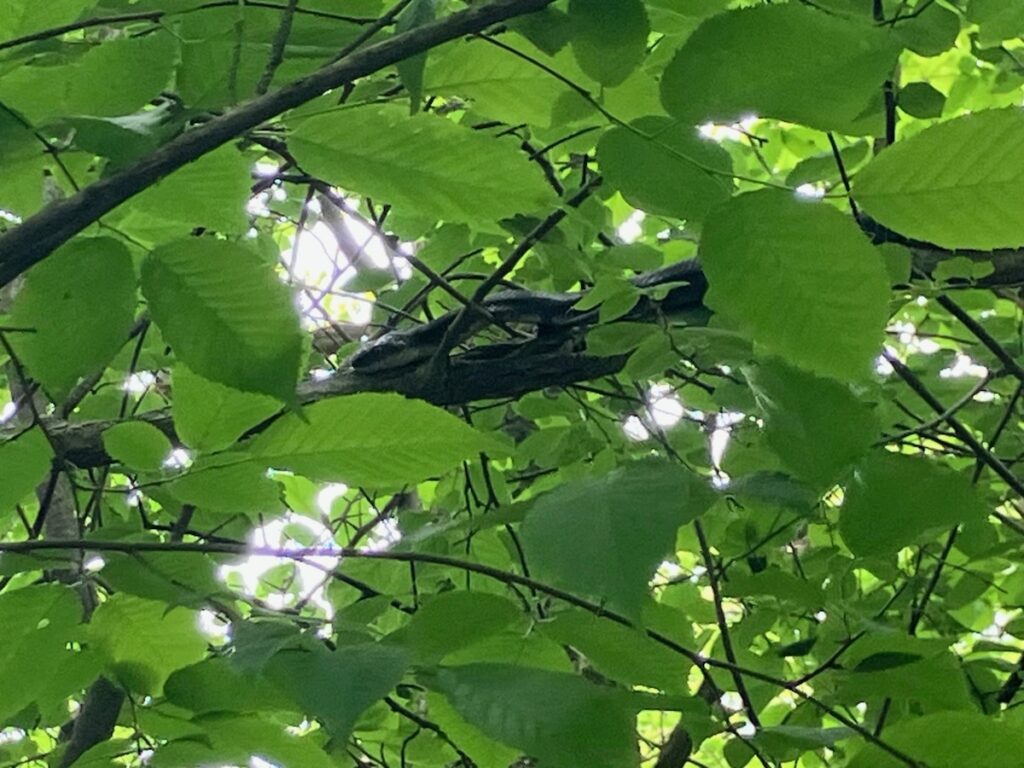
That late-May morning, David was doing what he has done each year for many years—spending the day with rising seniors in the UVM’s forestry program, introducing them to Vermont Family Forests’ approach to forests and forestry. The students were taking part in the Forestry Summer Camp, which has been part of UVM’s forestry program for decades. Indeed, David took part in it himself in 1974 or ’75—quite some time ago!
David’s aim was to share aspects of forestry the students likely didn’t see much of—specifically, to seeforest ecosystem conservation in action, as opposed to forest resource management. In VFF’s forest ecosystem conservation work, our top concern is forest health, including the unenclosed, unowned ecological commons (water, air, and wildlife)—which are a key part of a wholistic approach to forestry.
David met the students and their professor, Luben Dimov, at the Lands of The Watershed Center—1,001 acres of land in Bristol and New Haven. This summer, VFF will be carrying out erosion control work to bring a 3,800-foot section of the main trail into full compliance with the Vermont’s Acceptable Management Practices (AMPs). Working in pairs, students got hands-on practice assessing 200-foot sections of the trail and recommending practices to resolve any issues they found.
They then headed to Little Hogback Community Forest (LHCF) in Monkton. The brainchild of then-VFF board member Deb Brighton in 2006, LHCF was VFF’s experiment in making forest ownership accessible to more Vermonters. Within LHCF, 16 shareholders jointly own a 115-acre forest parcel, with eight of the shares reserved and subsidized for Addison County residents whose family income falls below the county median.
LHCF shareholders John McNerney and Lee Kauppila met the students at the forest and led them through the forest on access trails that member shareholders have worked on over the past several years, closing steep segments and connecting gently sloped ones to form a stable, erosion-resistant access network. John and Lee also shared stories of the Monkton Wood Bank, which they created at LHCF, describing how they cut, split, and delivered firewood to local residents in need.
En route to their next stop in Lincoln, students passed the Commoners’ Return Forest, which Vermont Family Forests purchased in March, 2025. Though they didn’t have time to stop, David gave them a brief overview of the land and of VFF’s intentions for it, shifting from industrial forest management to family forest conservation.
At their next stop of the day, David shared a personal project that brings together many of the ideas and ideals he has explored in forestry since his own time in the UVM Forestry Summer Camp. Since creating Vermont Family Forests 30 years ago, David has championed the idea that selling logs into an undifferentiated commodity market is a quick way to go broke and to compromise the forest’s ecological health. Local value-adding is a critical, and often missing, part of sustainable forestry.
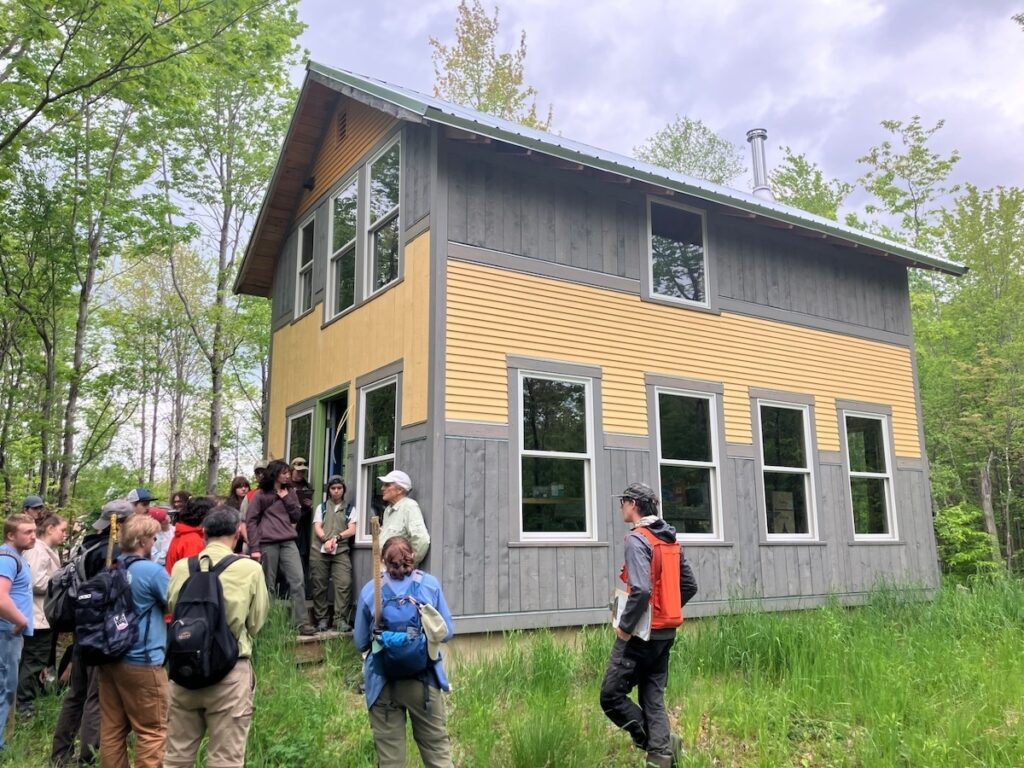
At his own 14-acre parcel of land in Lincoln, David showed students the 800-square-foot house (which he calls a “hytte” after the Norwegian mountain huts that inspired it) that he is building there. He explained the Norwegian approach to architecture and forestry following German occupation in World War II. There, landowners have created forestry cooperatives and have developed designs to use the resulting wood products well.
David described how he had framed the little house with air-dried lumber from white pines harvested in Bristol and milled at the house site. The guiding philosophy in his project—and his advice to them in their own lives—is to optimize land and labor and minimize capital and debt. David later reflected on the students’ intense interest in the project. “The kids were like ants,” he said. “They explored every inch of the hytte, inside and out.”
David and the students wrapped up the day’s forest ecosystem conservation tour at the Seth Hill Waterworks property in Lincoln. Together, they walked the main access trails to see the outcome of the erosion control project David had overseen there in 2024 to bring the trails into full compliance with Vermont’s AMPs. That work involved digging a series of broad-based dips, stone-lined broad-based dips, and deep waterbars, depending on the steepness of the road sections.
“It’s deeply inspiring and moving to see these young people so eager, engaged, and enthusiastic about being in and caring for forests,” David said. Deep thanks to Luben and to the UVM students for being part of this great day.
